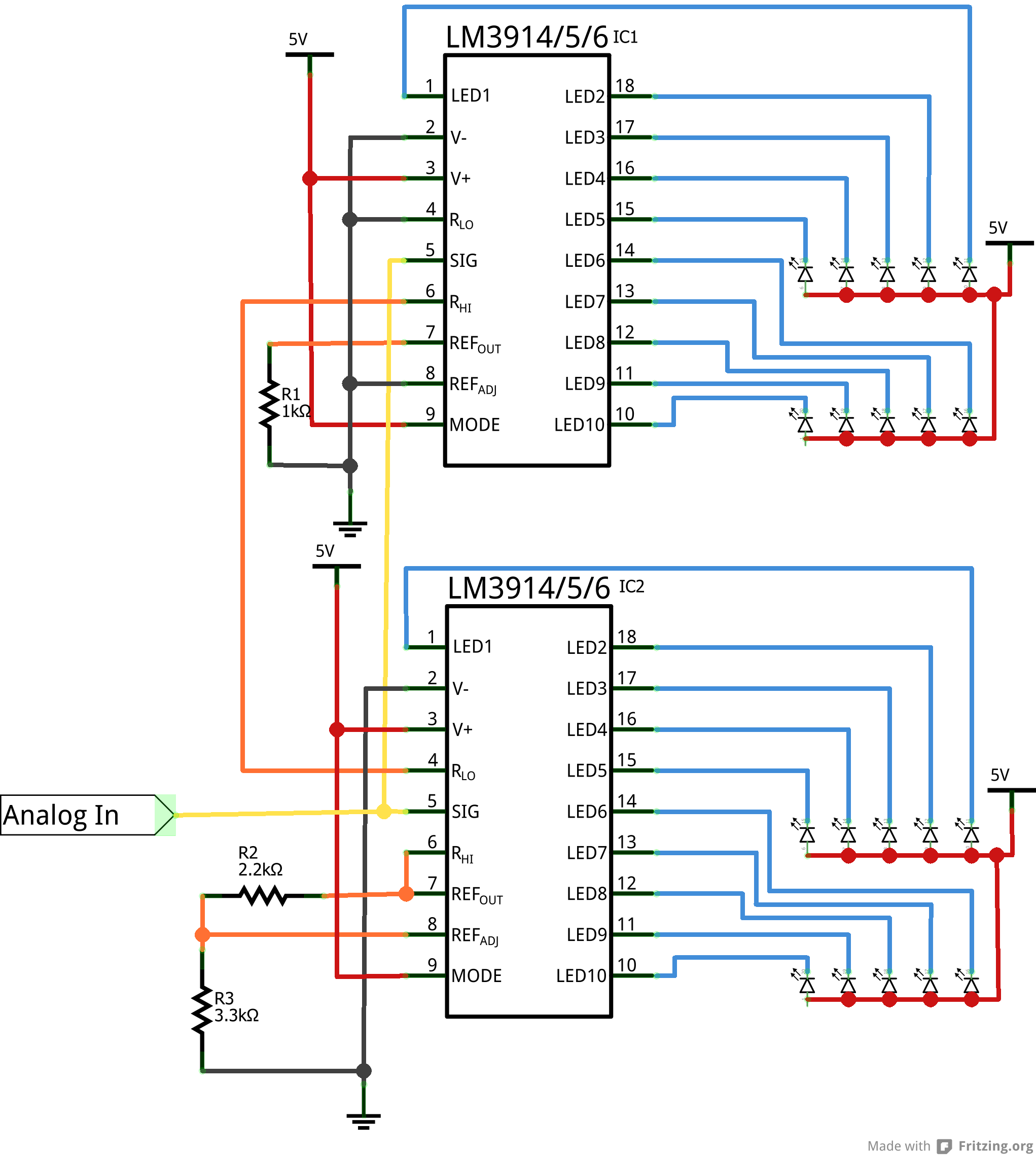What do i need to do to add more LM3914's olphart's circuit?
playing on breadboard, and got the lights sequencing nicely with one chip, i want to add another 10 led's now and have them sequence.. then another 10 after that,
Do i need to play with the component values when expanding the LM3914's and leds?
playing on breadboard, and got the lights sequencing nicely with one chip, i want to add another 10 led's now and have them sequence.. then another 10 after that,
Do i need to play with the component values when expanding the LM3914's and leds?







